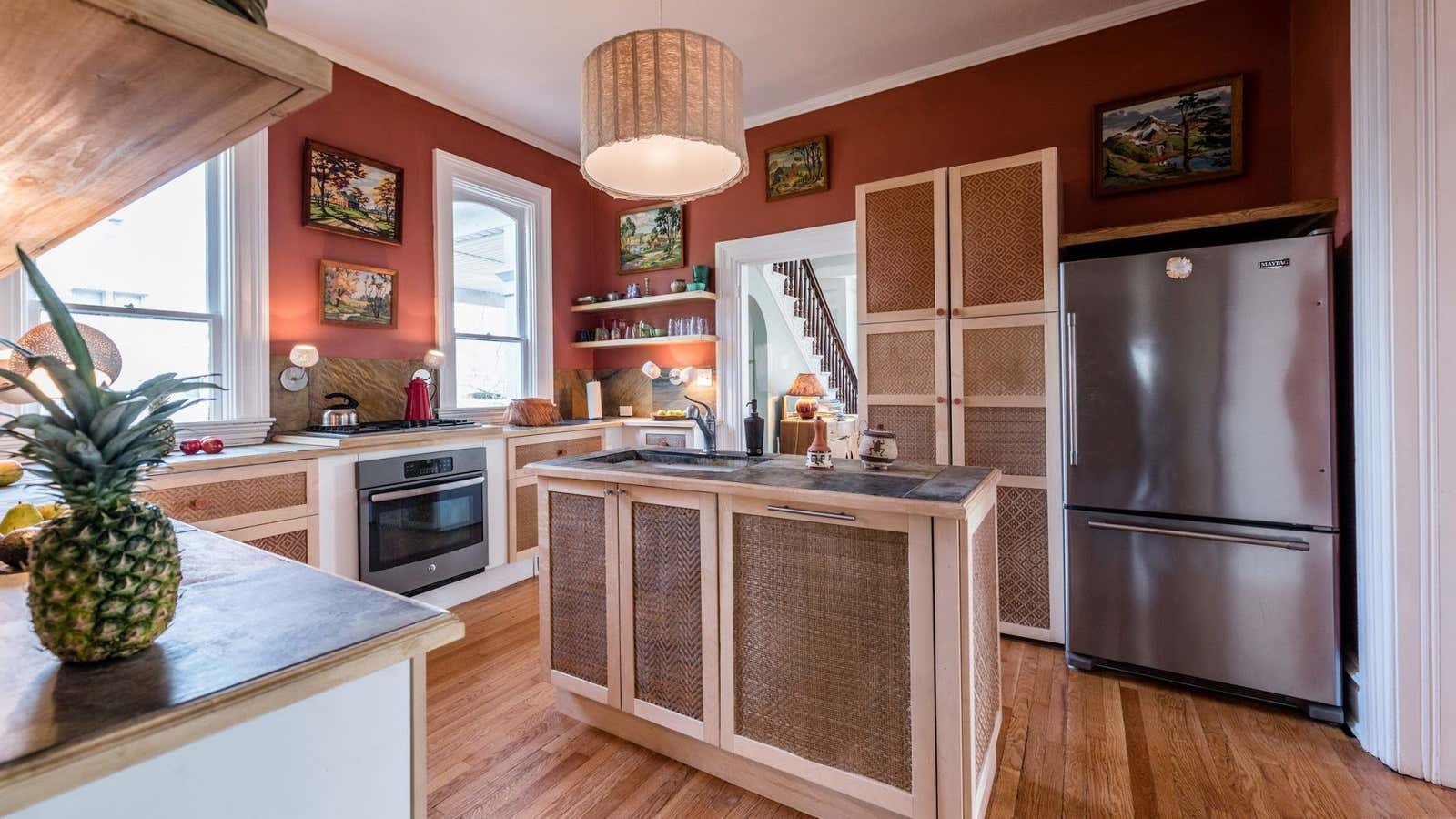Do you find Lack lackluster? Is Malm looking mundane? Good news for IKEA lovers seeking a respite from Scandi-style mass-market wares. Artisans around the world are creating custom faces, knobs, veneers, stickers and insets—all with the goal of making IKEA’s flatpack furniture more interesting.
Customizing IKEA furniture isn’t hard: Click on any of the many IKEA Hack forums and you’ll find a trove of ideas. IKEA’s own blog, in fact, features plenty of crafty suggestions. But for those with neither the time or inclination to mess around with hammers, sponge paint, and glue guns, some inspired off-the shelf options are available.
A few standouts in the burgeoning IKEA after-market industry: New York-based start-up Panyl offers furniture wraps for ho-hum Hemnes dressers. Swedish company Superfront makes handsome furniture pulls, Prettypegs offers an array of colorful sofa legs to give plain Klippan couches some needed personality, and O’verlays crafts graphic fretwork panels that can make any plain Pax wardrobe sing.
An artisan-centered enterprise called Wabbani is another IKEA facelift fabricator, this one with a cause. Located in the Rupununi region of Guyana, artisans use traditional basketweaving and clay-making techniques to create handmade woven panels and knobs to spice up standard IKEA kitchens.
“These add-ons instantly transform and humanize manufactured furnishings in a decor tradition,” explains Wabbani founder Alice Layton.
Layton, who is currently fundraising to get Wabbani’s first collection off the ground, says working with the templates of the world’s largest furniture manufacturer brings a halo effect to traditional artisans and their craft. “These traditional skills are fading as plastic takes over the world. And all over the world, tiny NGOs struggle to find tiny markets for remote, rural handicraft,” she says. “By making our products as add-ons to IKEA products, we link ourselves to an existing global market.”
The plague of sameness isn’t unknown to IKEA, whose head of design recognizes that hyper-efficient uniformity makes IKEA products great and affordable, but also a bit boring. Marcus Engman says businesses making products to personalize IKEA furniture align nicely with the company’s Democratic Design philosophy.
“We know uniqueness is a growing wish among people and we work with new techniques of ‘mass produced uniqueness’ to meet this,” Engman says, “but we are also opening up for co-creation as we believe collaborations makes things better.”
IKEA’s open-source mentality has already translated to new products. Last year, they introduced Delaktig, a plain modular sofa that’s purposely designed to be “hacked.” Prior to its launch, IKEA invited industrial design students to create custom coverings and imagine new configurations for what it’s calling “an open-source platform.” Delaktig’s creator, celebrated British designer Tom Dixon, likened it to an iPhone waiting for app developers.
IKEA has also been experimenting with limited-edition products made by traditional crafts communities. Last December, the company introduced a small collection from Jordanian and Syrian refugee women.
